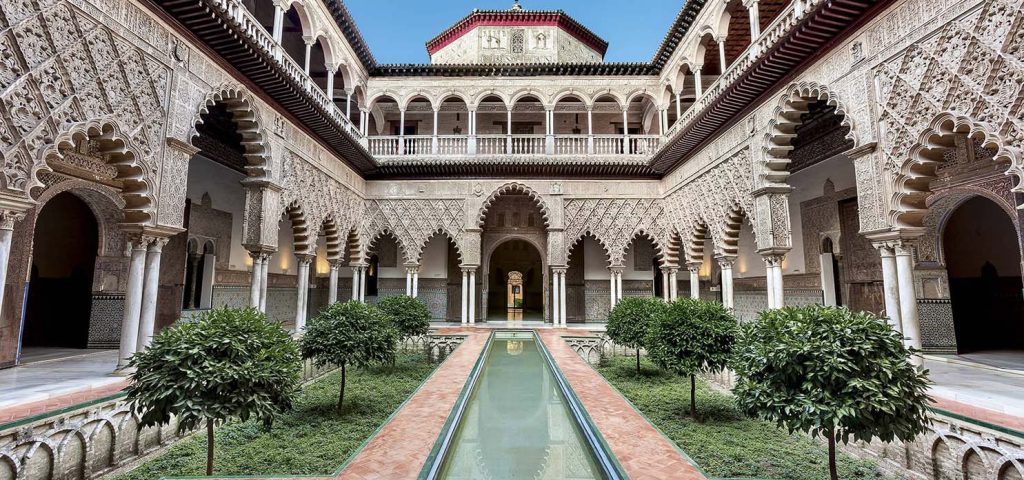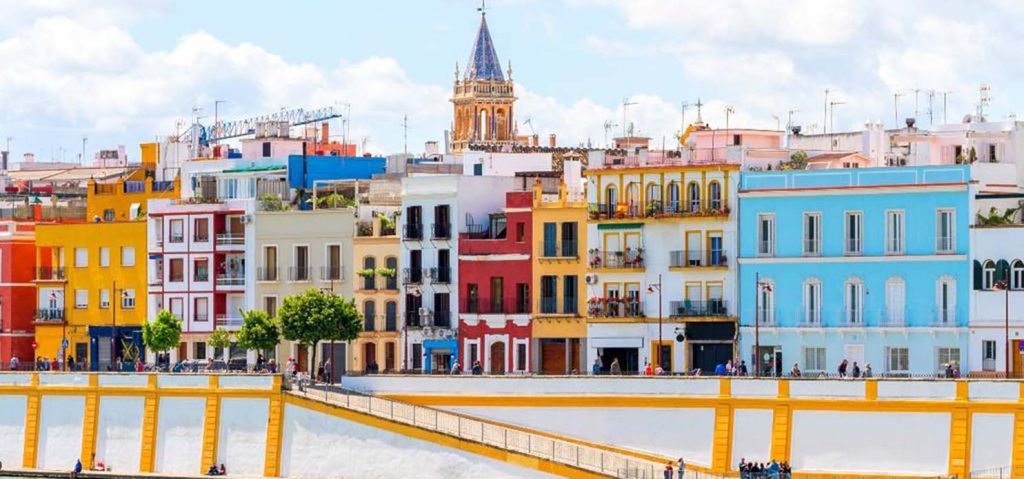Seville, the capital of Andalusia in southern Spain, is a city teeming with history, culture, and architectural beauty. With its rich Moorish heritage and vibrant flamenco scene, it offers an array of attractions that captivate every traveler. My journey through this enchanting city led me from the majestic Alcázar to the towering Giralda, allowing me to experience the essence of Seville firsthand. Here’s an in-depth exploration of these landmarks and what makes them special.
The Royal Alcázar of Seville
Location and Arrival
My adventure began at the Royal Alcázar, located conveniently in the heart of Seville. Arriving at the entrance, I was struck by the intricate carvings that adorned the walls and gates. The Alcázar, originally a Moorish fort, has evolved over centuries into a stunning palace that showcases a blend of architectural styles, including Mudejar, Gothic, Renaissance, and Baroque.
To get there, I took a short walk from my hotel in the Santa Cruz neighborhood, a picturesque area filled with narrow streets, whitewashed buildings, and vibrant flowers. The aroma of orange blossoms filled the air, enhancing the charm of the surroundings.

Exploring the Alcázar
Upon entering, I was greeted by the Patio de las Doncellas (Courtyard of the Maidens), an expansive courtyard that reflects the intricate beauty of Mudejar architecture. The walls are adorned with colorful tiles and elaborate arches, creating a sense of tranquility. I paused here to soak in the atmosphere, the sounds of water trickling from the fountains, and the gentle rustle of leaves from the surrounding gardens.
As I wandered deeper into the palace, I found myself in the Hall of Ambassadors, a grand room where royal meetings were held. The ceiling, a spectacular dome decorated with intricate woodwork, felt almost otherworldly. I could imagine the power dynamics and history that unfolded within these walls. The sheer opulence of the room made me feel like I was in a different era.
One of the highlights of my visit was the gardens. I spent hours exploring the lush greenery, hidden pathways, and beautiful fountains. The gardens are designed in a way that invites you to lose yourself among the fragrant plants and serene water features. I found a quiet bench to sit and reflect, feeling the warmth of the sun and listening to the distant laughter of families enjoying their day.
The Seville Cathedral and the Giralda Tower
After immersing myself in the Alcázar, I headed to the Seville Cathedral, just a short walk away. This magnificent structure is one of the largest cathedrals in the world and a UNESCO World Heritage site. The sheer scale of the building took my breath away as I approached the entrance.
Inside the Cathedral
Entering the cathedral, I was immediately struck by the vastness of the interior. The high ceilings, supported by intricate columns, created an atmosphere of reverence. I wandered through the various chapels, each adorned with stunning artwork, gold altarpieces, and religious artifacts. The Retablo Mayor, the main altarpiece, is a masterpiece of Baroque art and left me in awe of its detail and craftsmanship.
The cathedral’s history is equally fascinating. Built on the site of a former mosque, the Giralda Tower serves as a reminder of Seville’s Moorish past. I decided to climb the Giralda, eager to experience the views from the top. Unlike most towers, the Giralda has a series of ramps instead of stairs, making the ascent comfortable and leisurely.
Climbing the Giralda
As I climbed higher, I could feel the excitement building. With each turn, I caught glimpses of the city through small windows. Finally, I reached the top, where I was greeted by panoramic views of Seville that took my breath away. The sprawling rooftops, the winding Guadalquivir River, and the distant hills painted a picturesque scene that made the climb well worth it.
From this vantage point, I noticed the contrast between the historic architecture of the cathedral and the modern buildings of the city. I took a moment to appreciate how Seville balances its rich past with the vibrancy of contemporary life.
The Metropol Parasol
After my exploration of the cathedral, I made my way to the Metropol Parasol, a modern architectural marvel located in the bustling Plaza de la Encarnación. Known as “Las Setas” (The Mushrooms), this wooden structure is an intriguing contrast to Seville’s historic landmarks.
Experiencing the Metropol Parasol
As I approached the Metropol Parasol, I was struck by its unique design and size. The structure consists of six large canopies that provide shade to the square below. I headed to the rooftop walkway, eager to see the city from a different perspective.
Walking along the pathway, I felt a sense of excitement as I took in the views of the plaza below and the surrounding neighborhoods. The sun was beginning to set, casting a warm glow over the city. I paused to take photos, capturing the moment as the sky transformed into hues of orange and pink. The Metropol Parasol also houses a market and an archaeological museum, adding to its appeal as a vibrant cultural hub.
The Plaza de España
A visit to Seville wouldn’t be complete without exploring the Plaza de España, an iconic square that showcases the beauty of Spanish Renaissance architecture. The plaza was built for the Ibero-American Exposition of 1929 and is a stunning example of the architectural style.
Wandering the Plaza
As I entered the plaza, I was immediately captivated by the semicircular building adorned with colorful tiles representing each of Spain’s provinces. The central fountain and the bridges that cross the canal added to the romantic atmosphere. I took a leisurely stroll around the plaza, admiring the artistry in the tiles and the intricacies of the surrounding structures.
I decided to rent a paddle boat to explore the canal, which allowed me to see the plaza from a different angle. Gliding through the water, I felt a sense of tranquility, surrounded by the sounds of laughter and the gentle splashing of oars. It was a perfect spot to relax and soak up the sun.
The Triana District
No visit to Seville would be complete without exploring the Triana District, known for its flamenco heritage and ceramic craftsmanship. Crossing the Triana Bridge, I felt a sense of anticipation for what lay ahead. This charming neighborhood has a distinct atmosphere, and I loved wandering through its narrow streets filled with local shops and tapas bars.

Indulging in Local Cuisine
I stopped at a small tapas bar, where I indulged in salmorejo and fried fish, two of the region’s specialties. The locals were friendly, and I enjoyed conversing with them, learning about their traditions and the significance of flamenco in their culture. The lively ambiance and the rhythm of flamenco music played in the background made for a truly immersive experience.
One evening, I decided to attend a flamenco show in Triana. The energy in the room was palpable as the dancers showcased their incredible skill and passion. The rhythm of the music resonated in my heart, and I felt transported into the vibrant culture of Seville.
The Archives of the Indies
On my way back to the city center, I visited the Archives of the Indies, a UNESCO World Heritage Site housing an extensive collection of documents related to the Spanish colonies in the Americas. The building itself is a beautiful example of Spanish Renaissance architecture. Inside, I found myself surrounded by centuries of history, exploring the rich narratives of exploration and trade that shaped the Spanish Empire.
A Journey Through History
The Archives offer a fascinating insight into the connections between Spain and the New World. I spent hours browsing through exhibits that detailed the voyages of discovery, the establishment of colonies, and the exchange of goods. The wealth of information available made it clear why this site is considered a vital part of Spain’s heritage.
A Journey Through History
My exploration of Seville’s landmarks was not just about seeing beautiful sites; it was a journey through time. Each location offered a glimpse into the past, from the regal architecture of the Alcázar to the vibrant streets of Triana. Seville is a city that embraces its history while pulsating with life, and I left feeling enriched by the experiences and stories woven into its fabric.
Seville is not just a destination; it’s an experience that captures the essence of Spain. With each landmark I visited, I felt a deeper appreciation for the culture and history that define this vibrant city.